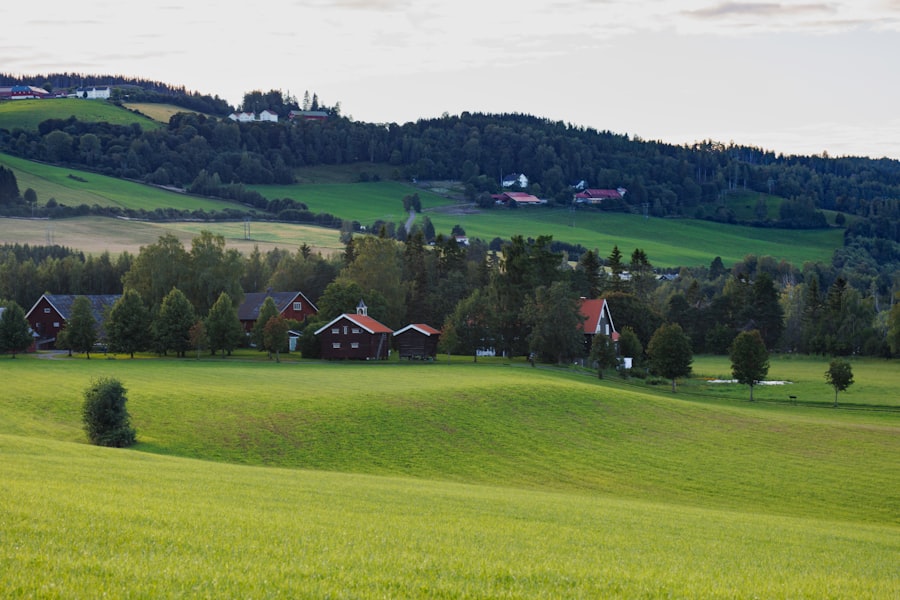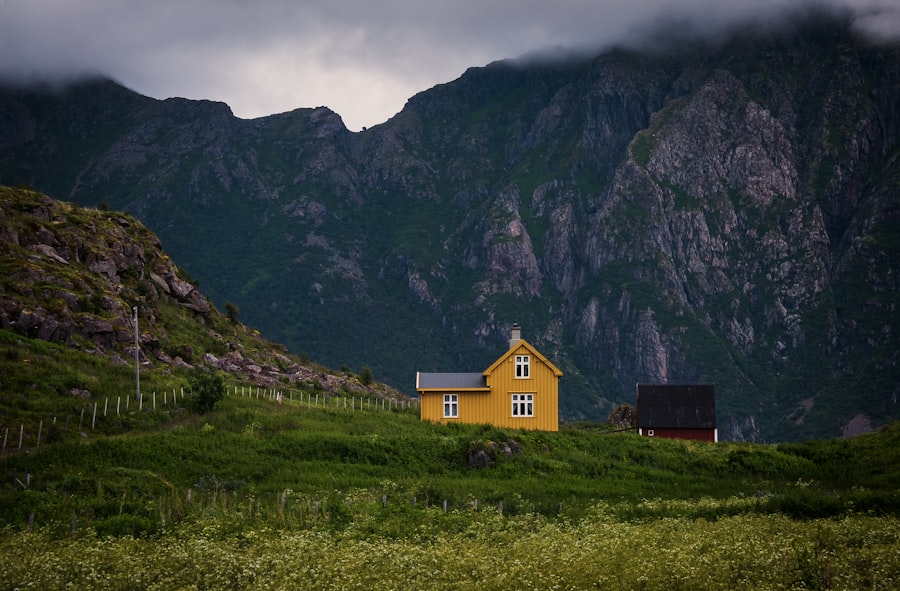Matpakke, a quintessential element of Norwegian culinary culture, is more than just a packed lunch; it embodies the spirit of practicality and simplicity that characterises the Norwegian way of life. Typically consisting of an assortment of open-faced sandwiches, matpakke is often prepared with care and attention to detail, reflecting the values of nourishment and sustainability. This traditional meal is not only a staple for schoolchildren and workers but also serves as a reminder of the importance of home-cooked food in a fast-paced world.
As we delve deeper into the significance of matpakke, we will uncover its historical roots, cultural relevance, and the myriad ways it continues to shape Norwegian society today. The concept of matpakke is deeply ingrained in the daily routines of Norwegians, serving as a practical solution for those on the go. It is a meal that can be easily assembled, allowing for creativity while adhering to the principles of frugality and resourcefulness.
In a country where outdoor activities are prevalent, matpakke has become synonymous with adventure, providing sustenance for hikers, skiers, and families enjoying nature. As we explore the various facets of matpakke, we will see how this simple meal encapsulates the essence of Norwegian identity and lifestyle. Book Your 1-Hour Relocation Strategy Session
Summary
- Matpakke is a traditional Norwegian packed lunch consisting of open-faced sandwiches.
- Matpakke has been a part of Norwegian culture for centuries, with historical and cultural significance.
- Matpakke reflects Norway’s practical and frugal approach to food, making it a symbol of practicality and resourcefulness.
- Matpakke is closely tied to Norway’s outdoor lifestyle, as it is convenient for outdoor activities and adventures.
- Matpakke promotes health and sustainability, with its focus on wholesome ingredients and minimal waste.
Historical and Cultural Significance of Matpakke
The origins of matpakke can be traced back to Norway’s agrarian past, where home-cooked meals were essential for sustenance during long working days. Farmers and labourers would prepare hearty sandwiches made from locally sourced ingredients, ensuring they had enough energy to carry out their daily tasks. This practice not only highlights the resourcefulness of Norwegians but also reflects a deep connection to the land and its produce.
Over time, matpakke evolved into a cultural symbol, representing the values of hard work and self-sufficiency that are still celebrated in contemporary Norwegian society. Culturally, matpakke has become a cherished tradition that transcends generations. It is often associated with childhood memories, as parents lovingly prepare these meals for their children before they head off to school.
The act of making matpakke is imbued with care and affection, reinforcing familial bonds and instilling a sense of pride in one’s heritage. As children grow up, they carry forward this tradition, ensuring that matpakke remains an integral part of Norwegian life. This continuity not only preserves culinary practices but also fosters a sense of belonging and identity among Norwegians.
Matpakke as a Symbol of Practicality and Frugality

In a world increasingly dominated by convenience foods and fast-paced lifestyles, matpakke stands as a testament to practicality and frugality. The very essence of this meal lies in its simplicity; it is designed to be nutritious yet affordable, making it accessible to all. Norwegians take pride in their ability to create delicious meals from basic ingredients, often utilising leftovers from previous meals to minimise waste.
This approach not only promotes sustainability but also encourages creativity in the kitchen, as individuals experiment with various combinations of bread, spreads, and toppings. Moreover, matpakke serves as an antidote to the consumerist culture that often prioritises convenience over quality. By preparing their own lunches, Norwegians are empowered to make healthier choices while saving money.
This practice fosters a sense of independence and self-reliance, qualities that are highly valued in Norwegian society. As such, matpakke is not merely a meal; it is a reflection of a mindset that prioritises thoughtful consumption and resourcefulness.
Matpakke as a Reflection of Norway’s Outdoor Lifestyle
Norway’s breathtaking landscapes and outdoor activities play a significant role in shaping the matpakke tradition. With an abundance of hiking trails, skiing resorts, and picturesque fjords, Norwegians often find themselves venturing into nature for leisure and recreation. Matpakke has become synonymous with these outdoor excursions, providing sustenance for those who seek adventure in the great outdoors.
Whether it’s a family picnic by a serene lake or a quick bite during a mountain hike, matpakke is the perfect companion for any outdoor activity. The practicality of matpakke makes it an ideal choice for those who lead an active lifestyle. Its portable nature allows individuals to easily pack their meals without the need for elaborate preparation or refrigeration.
This convenience encourages Norwegians to embrace their natural surroundings while enjoying wholesome food that fuels their adventures. As such, matpakke not only nourishes the body but also enhances the overall experience of exploring Norway’s stunning landscapes.
The Health Benefits of Matpakke
In addition to its cultural significance, matpakke offers numerous health benefits that contribute to overall well-being. By preparing their own lunches, individuals have greater control over their dietary choices, allowing them to incorporate fresh ingredients and balanced nutrition into their meals. A typical matpakke may include whole grain bread topped with lean proteins such as fish or poultry, accompanied by an array of vegetables and healthy fats like avocado or cheese.
This combination provides essential nutrients that support physical health and energy levels throughout the day. Furthermore, matpakke encourages mindful eating habits by promoting portion control and reducing reliance on processed foods. By opting for homemade meals over convenience options, Norwegians can avoid excessive sugar and unhealthy fats often found in pre-packaged lunches.
This conscious approach to eating not only benefits individual health but also contributes to a broader societal shift towards healthier lifestyles.
Matpakke and Sustainability

Sustainability is at the heart of the matpakke tradition, aligning seamlessly with Norway’s commitment to environmental stewardship. The emphasis on using local ingredients not only supports local farmers but also reduces carbon footprints associated with food transportation. By prioritising seasonal produce and minimising food waste through creative meal preparation, Norwegians exemplify sustainable practices that resonate with global efforts to combat climate change.
Moreover, matpakke encourages individuals to adopt eco-friendly habits by utilising reusable containers and utensils instead of single-use plastics. This conscious choice reflects a growing awareness of environmental issues and highlights the importance of making sustainable decisions in everyday life. As more people embrace the principles of sustainability through their food choices, matpakke stands as a powerful symbol of responsible consumption that resonates with both current and future generations.
Matpakke in the Workplace and Schools
Matpakke has become an integral part of daily life in both workplaces and schools across Norway. For employees, bringing a packed lunch not only saves money but also fosters camaraderie among colleagues who share similar culinary traditions. Lunchtime becomes an opportunity for social interaction as individuals gather to enjoy their homemade meals together, often exchanging recipes or discussing their favourite fillings.
This communal aspect reinforces workplace relationships while promoting a culture of health-conscious eating. In schools, matpakke plays a vital role in ensuring that children receive nutritious meals during their academic day. Parents take pride in preparing these lunches, often involving their children in the process to instil healthy eating habits from an early age.
Schools also recognise the importance of promoting balanced diets among students by encouraging them to bring wholesome foods rather than sugary snacks or processed items. This collective effort contributes to fostering a generation that values nutrition and well-being.
Matpakke and Social Interaction
Beyond its nutritional value, matpakke serves as a catalyst for social interaction within Norwegian culture. The act of sharing meals has long been associated with building relationships and fostering community ties. Whether it’s during lunch breaks at work or family gatherings at home, matpakke provides an opportunity for individuals to connect over food while sharing stories and experiences.
In many cases, matpakke becomes a topic of conversation among friends and colleagues as they compare their lunch choices or swap ideas for new fillings and combinations. This exchange not only enhances culinary creativity but also strengthens social bonds within communities. The simple act of enjoying a meal together fosters camaraderie and reinforces the notion that food is not just sustenance; it is also a means of connection.
Matpakke and Traditional Norwegian Ingredients
At the heart of every matpakke lies an array of traditional Norwegian ingredients that reflect the country’s rich culinary heritage. Rye bread serves as a staple base for many sandwiches, offering a hearty foundation that pairs well with various toppings. Common fillings include cured meats like salami or ham, fresh fish such as salmon or mackerel, and an assortment of cheeses that showcase Norway’s artisanal dairy production.
Vegetables play an equally important role in matpakke, with options ranging from crisp lettuce and juicy tomatoes to pickled cucumbers and radishes. These fresh ingredients not only enhance flavour but also contribute essential vitamins and minerals to each meal. By incorporating traditional Norwegian ingredients into their packed lunches, individuals celebrate their cultural heritage while enjoying wholesome food that nourishes both body and soul.
Matpakke and Family Traditions
Matpakke is often intertwined with family traditions that span generations in Norway. Many families have their own unique recipes or preferred combinations that are passed down through the years, creating a sense of continuity and connection among relatives. The preparation of matpakke can become a cherished ritual within households as parents involve their children in assembling lunches before heading out for the day.
These family traditions surrounding matpakke extend beyond mere food preparation; they encompass values such as sharing meals together and appreciating home-cooked nourishment. As families gather around the table to enjoy their packed lunches or reminisce about past adventures involving matpakke outings, they reinforce bonds that transcend time and distance. In this way, matpakke becomes more than just sustenance; it embodies love, care, and shared experiences that define family life in Norway.
The Enduring Importance of Matpakke in Norwegian Culture
In conclusion, matpakke stands as an enduring symbol of Norwegian culture that encapsulates practicality, sustainability, and community spirit. Its historical roots reflect a deep connection to the land while its contemporary relevance highlights the importance of healthy eating habits in today’s fast-paced world. As Norwegians continue to embrace this cherished tradition, they celebrate not only their culinary heritage but also the values that define their identity.
The significance of matpakke extends beyond mere nourishment; it fosters social connections among friends, families, colleagues, and communities alike. As we navigate an increasingly complex world filled with convenience foods and fast-paced lifestyles, the principles embodied by matpakke serve as a reminder of the importance of mindful consumption and sustainable practices. For those considering relocation to Norway or seeking deeper insights into this rich culture, engaging with the Norway Relocation Group can provide invaluable guidance through their One-Hour Strategy Session—an opportunity to explore how traditions like matpakke can enrich your experience in this beautiful country while embracing its values wholeheartedly.

